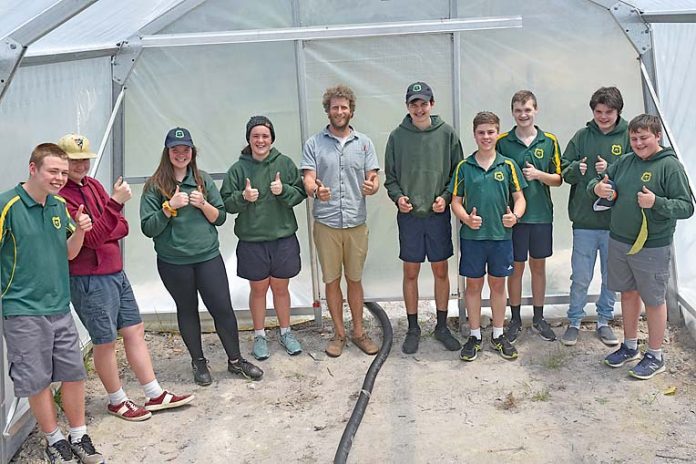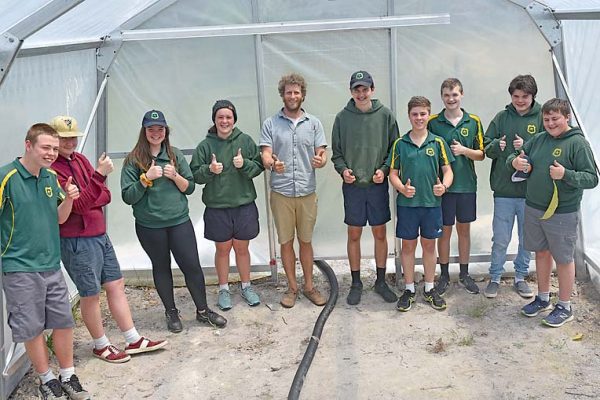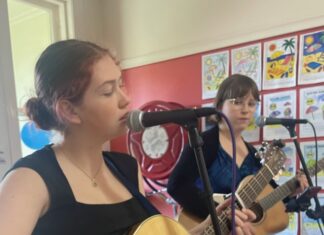

Pictures: BROOKE LITTLEWOOD
ALTHOUGH ditching single-use plastic is an important way forward, Kangaroo Inn Area School (KIAS) students are proving people can do much more to reduce their carbon footprint.
After receiving State Government funding through a Science Technology Engineering and Mathematics (STEM) learning grant almost two years ago, students and teachers have used their green thumbs to build a centre for sustainable living.
Students across all year levels have undertaken a number of projects in the centre to facilitate an understanding of STEM careers, with the latest task to build a greenhouse.
KIAS secondary teacher Tom Davidson said a new and improved greenhouse was chosen as a piece of infrastructure the school community could benefit from.
“We purchased the greenhouse and with the help of groundsman Tim Leopold the students have been involved in (putting together) its non-structural components, which has been good for life learning,” he said.
“They have been exposed to trade work, familiarising themselves with tools and mixing cement, as well as work ethic around the building site.
“It has been a powerful thing for students to learn because it is what industries want and look for.
“I think industries want students to already have the awareness when they are graduating and also have particular skill sets developed a bit younger.
“They have been learning behaviours around the job site in that you need to constantly be looking for the next thing to do and those preempted behaviours in their work experiences and career.”
Once the next phase of building and plumbing has been completed, the school will look at the greenhouse’s potential use on a small scale.
They have discussed running a school business in which they propagate vegetable seedlings and plants, including ornamental cactus, to sell to the wider community.
“We will look at plumbing next and source rainwater tank storage for germinating plants,” Mr Davidson said.
“We will look into that and tying it into the curriculum next year.
“The greenhouse can lead to all types of learning from budgeting and maths with profit and loss, to calculating percentage of successful germination and what kind of funds we might be able to achieve through small in-school business.”
The STEM career grant also enabled the school to transition a fish farm onto solar renewable energy.
A donation of a number of solar panels from Robe Electrical allowed the school to take the necessary steps forward to start the project.
The Year 10s worked through the fundamentals of power and how to connect solar panels to battery banks.
“We use the energy stored in the battery to run a direct current pump that recirculates water around a fish tank so what once was a persistent energy draw on 24 hours a day is now completely run on the power of the sun,” Mr Davidson said.
“We produce trout and watercress at no energy expense onsite.”
Mr Davidson said the school was grateful for the grant and had maximised its influence for student learning.
“It is not so much about getting things as it is about maximising learning outcomes,” he said.
“We have been able to build the centre for sustainable living, which has been a development of the agricultural yard.
“Alongside this is the school waste collaboration where we work to reduce the amount of waste at the school and either compost it or use it for worm farms.
“This has also been a part of the grant and contributes to the centre for sustainable living.”





